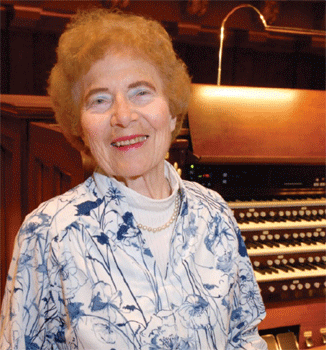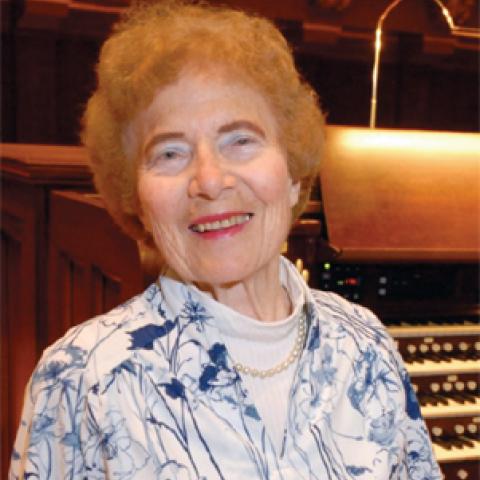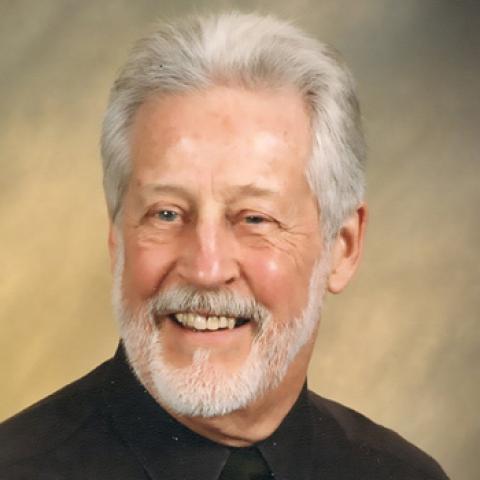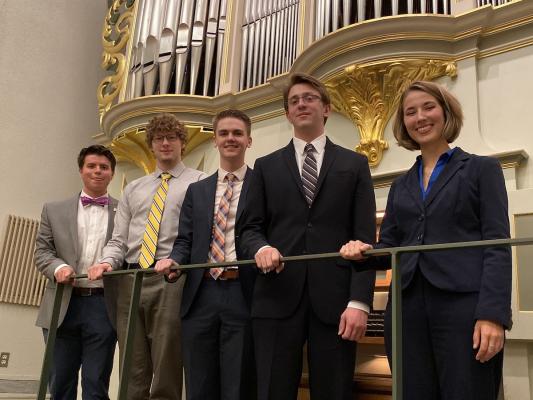Susan Palo Cherwien
Susan Louise Palo Cherwien died December 28, 2021. Born May 4, 1953, in Ashtabula, Ohio, she was active in music in school and at Zion Lutheran Church (Finnish-American), Lutheran Church–Missouri Synod. Her undergraduate degree in church music and voice was earned from Wittenberg University, Springfield, Ohio, in 1975. Her junior year was spent at the Berlin Church Music School, Spandau, Germany. After graduating from Wittenberg, she returned to Berlin to complete a graduate degree at the Berlin Conservatory of Music. She was active in the American Lutheran Church in Berlin, a mission church of the Lutheran Church in America (now part of the Evangelical Lutheran Church in America).
It was through this church in Berlin that Susan Palo met David Cherwien, who came in 1979 to study at the Berlin Church Music School. They returned to the United States in 1981 and were married on August 8 at Central Lutheran Church, Minneapolis, Minnesota. Two weeks later they moved to Seattle where David served at First Lutheran Church of Richmond Beach. Two sons were born, Jeremiah in 1983 and Benjamin in 1986. In 1987 the family moved to the Chicago area for David to serve at St. Luke’s Evangelical Lutheran Church of Park Ridge, Illinois. During these years, Susan earned a master’s degree from Mundelein University and began her career as a writer. Since 1990 the family has lived in St. Louis Park, Minnesota, and has been a part of the community at Mount Olive Lutheran Church, Minneapolis, where Susan served in many capacities as volunteer, sacristan, and soloist.
As a poet, Susan Cherwien wrote extensively, especially in two areas: hymn texts and reflections for hymn festivals, published by Augsburg Fortress and MorningStar Music Publishers. Her hymns are included in hymnals of many denominations, including Evangelical Lutheran Book of Worship and its newest supplement hymnal, All Creation Sings.
Susan Louise Palo Cherwien is survived by her husband, David; sons and daughters-in-law, Jeremiah and Karen and their children Hannah and James Cherwien in Batesville, Arkansas; Benjamin and Angel and their daughter Gabriella Hull Cherwien in Blaine, Minnesota; brother John Palo (Freddie) of Lenexa, Kansas; and sister Nancy Bukowski of Sacramento, California. A funeral service was held on December 31, 2021, at Mount Olive Lutheran Church. Memorials may be directed to Mount Olive Lutheran Church debt reduction fund (mountolivechurch.org) or National Lutheran Choir (nlca.com).
Merrill Nathaniel (“Jeff”) Davis III
Merrill Nathaniel (“Jeff”) Davis III, 80, died October 16, 2021, in Rochester, Minnesota. Born February 13, 1941, in Chicago, Illinois, he lived most of his childhood and teen years in La Crosse, Wisconsin. He was an active organist while still in grade school, and at age 15 was dean of the La Crosse area chapter of the American Guild of Organists. Davis earned his bachelor’s degree at the University of Wisconsin, La Crosse, and studied organ privately with Arthur B. Jennings, Jr. He completed his Master of Music degree at Southern Methodist University, Dallas, Texas, as a student of Robert T. Anderson. Additional studies and coaching were with Willard Irving Nevins, Gerald A. Bales, Arthur Poister, and Heinrich Fleischer.
Davis served as musician for various congregations, including First Congregational Church, La Crosse, Wisconsin; St. Clement’s Episcopal Church, St. Paul Church, Zumbro Lutheran Church, First Unitarian Universalist Church, and the Congregational (United Church of Christ) Church, all in Rochester, Minnesota. He was a frequent guest organist at Seventeenth Church of Christ, Scientist, Chicago, Illinois. Davis concertized widely and was known for his skills as an improviser. In 1974, he was one of four finalists at the International Organ Improvisation Competition at St. Bavo Church, Haarlem, the Netherlands, and the first American to be invited to compete there. He was an active member of the Southeast Minnesota AGO Chapter.
Davis was also involved in the pipe organ industry as a sales representative and freelance consultant. The firms for which Davis worked included the Aeolian-Skinner Organ Company, Rodgers Instruments, and Rieger-Kloss of Krnov, Czech Republic. He also consulted on behalf of other companies, in particular Hendrickson Organ Company, St. Peter, Minnesota. He also was involved as a personal financial advisor, working for IDS.
Merrill Nathaniel Davis III is survived by two sons and two sisters-in-law. He was preceded in death by his parents, a brother, a sister, and by his first wife, Jane Schleiter Davis, and his second wife, June Fiksdal Davis. A memorial concert is planned for February 12 at the Congregational Church, Rochester, Minnesota.
Richard Stanley Houghten
Richard Stanley Houghten, 78, died December 29, 2021, from complications following heart surgery. Born October 7, 1943, in Detroit, Michigan, he was introduced to the organ partly from exposure to the Barton organ at Ann Arbor’s Michigan Theatre, and partly at an organbuilding class taught by Robert Noehren at the University of Michigan, where he was studying psychology. He eventually apprenticed to Noehren as an organbuilder, as did classmate Jerroll Adams; Adams and Houghten would soon be sharing a barn-workshop in Milan, Michigan, and regularly collaborating.
A conscientious and well-rounded organbuilder, Richard became best known as a specialist in consoles and electrical systems. Early in his career he worked for Solid State Logic, eventually becoming president and board chairman. In this role he was central to the industry’s adoption of solid-state technology, particularly in the 1970s and 1980s when such equipment was still novel. He was further central in evolving multilevel combination actions and other advanced console aids. By 1995, he was fully independent of SSL, undertaking projects and occasional organbuilding. From 1989 he also acted as North American representative for the German supplyhouse/organbuilder Aug. Laukhuff.
For Houghten, demystifying solid-state technology was religion. He not only sold early systems but installed them, where, on site, he was intent on showing local technicians how to diagnose and service the new equipment. The reliable results of these early projects earned him a high reputation. Projects readily came his way, often without competition, and his client list over 57 years reads as impressively as any could. In the last 15 years alone, St. Paul’s School, Concord, New Hampshire; Duke University, Durham, North Carolina; Harvard University, Cambridge, Massachusetts; Calvary Church, Memphis, Tennessee; the Community of Jesus, Orleans, Massachusetts; and Trinity Church, Boston, Massachusetts, sought his work. In turn, Richard regularly collaborated with
J. Zamberlan & Co. for woodworking and his trusted affiliate Vladimir Vaculik, whose wiring had all the Houghten trademark elegance.
Houghten was equally active as a subcontractor, working largely in the background to builders wanting clear systems design coupled to immaculate installation and wiring. The relationships he forged with those shops, together with his technical mastery and reassuring demeanor, meant that it was often he, not the electronics manufacturer, who would be called in a crisis. “Is there smoke? Good. Next question . . . .”
Throughout his career, Houghten retained connections to the University of Michigan. During Jerroll Adams’s long tenure as organ curator there, the Houghten team renovated consoles for many campus organs, including the large four-manual at Hill Auditorium. The University link was further strengthened through a steady stream of organ students who also served as housemates in the Houghten condominium, tending to the cats and technology Richard gathered there.
The funeral for Richard Stanley Houghten was held January 12 at St. Paul’s Episcopal Cathedral, Detroit. A broader celebration of his life is being scheduled immediately preceding the 2022 Atlantic City Convention of the American Institute of Organbuilders, with which Houghten was centrally active and at whose regular October gatherings he celebrated a half-century of his own birthdays. That same community remembers him as an uncommonly generous colleague, ready to share knowledge, solve a problem, or make something as good as it could be for the benefit of all organbuilding.
—Jonathan Ambrosino, Arlington, Massachusetts
Marilyn Kay Stulken Rench
Marilyn Kay Stulken Rench, 80, organist, teacher, recitalist, author, and genealogist, died December 28, 2021, in Franklin, Wisconsin. She was born August 13, 1941, in Hastings, Nebraska, and studied organ and church music at Hastings College in Hastings, where she earned a Bachelor of Arts degree in 1963. During this time, she had several piano and organ students and from 1962–1965 served as organist and program director at All Faiths Chapel, Ingleside, Nebraska. At Eastman School of Music, Rochester, New York, she studied organ performance and church music, earning a Master of Music degree in 1967 and a Doctor of Musical Arts degree in 1975. One of her positions while in Rochester was as a sewing therapist at Strong Memorial Hospital.
Stulken Rench held a number of church positions, including organist and choir director at St. Paul’s Lutheran Church, Pittsford, New York, 1966–1973; organist at St. Mark’s Lutheran Church, Cedar Rapids, Iowa, 1975–1979; director of music at Trinity Lutheran Church, Kenosha, Wisconsin, 1979–1985; and organist at St. Luke’s Episcopal Church, Racine, Wisconsin, from 1986 to the time of her death. In addition, she taught at Coe College, Cedar Rapids, Iowa; the University of Iowa, Iowa City; Carthage College, Kenosha; University of Wisconsin-Parkside, Kenosha; and Concordia University Wisconsin, Mequon.
On December 27, 1984, in Omaha, Nebraska, Marilyn Stulken married Thomas R. Rench, a pipe organ builder. Marilyn often played programs on instruments that Tom had built or restored. As a lecturer and organ recitalist, she appeared throughout the United States and Canada, including ten recitals for national conventions of the Organ Historical Society. After Tom installed a pipe organ in the family room of their home, the instrument was used for practicing and teaching. When her multiple sclerosis precluded her from playing the pedals, Tom engineered the keyboard at St. Luke’s so that a note played by her left hand could sound that same note on the pedalboard.
Stulken Rench is the author of the Hymnal Companion to the Lutheran Book of Worship (1981) and An Introduction to Repertoire and Registration for the Small Organ (1995), and coauthor with Catherine Salika of Hymnal Companion to Worship, Third Edition (1998). She was one of three contributors who assisted in the preparation of historical notes on the hymns in The New Century Hymnal (1995). With Martin A. Seltz and others, she compiled Indexes for Worship Planning (1996), and with James R. Sydnor and Bert Polman, she edited Amazing Grace: Hymn Texts for Devotional Use (1994). She contributed an article, “Hymnody from German, Scandinavian and Finnish Sources,” to The New Century Hymnal Companion (1998), and “Hospital Hymnody as Transition Hymnody” to We’ll Shout and Sing Hosanna: Essays on Church Music in Honor of William J. Reynolds (1998). She is the author of With One Voice Reference Companion (2000) and authored numerous articles and reviews for musical journals. Stulken Rench was active in the American Guild of Organists, the Organ Historical Society, the Hymn Society of America, and, for a time, was the worship representative on the Southport District Cabinet of the Wisconsin-Upper Michigan Synod of the LCA (Lutheran Church in America).
Marilyn Kay Stulken Rench was predeceased by her husband, Thomas R. Rench, and a stepson, Evan Rench. (For an obituary for Thomas R. Rench, see the January 2016 issue, p. 8). She is survived by her stepchildren Alan (Mary) Rench, Eric (Bobbie) Rench, and Kari (Jeff) Eschmann; seven grandchildren and seven great-grandchildren; as well as two sisters and a brother. A memorial service will be held in the spring. Memorial gifts may be made to St. Luke’s Episcopal Church, 614 Main Street, Racine, Wisconsin 53403.





